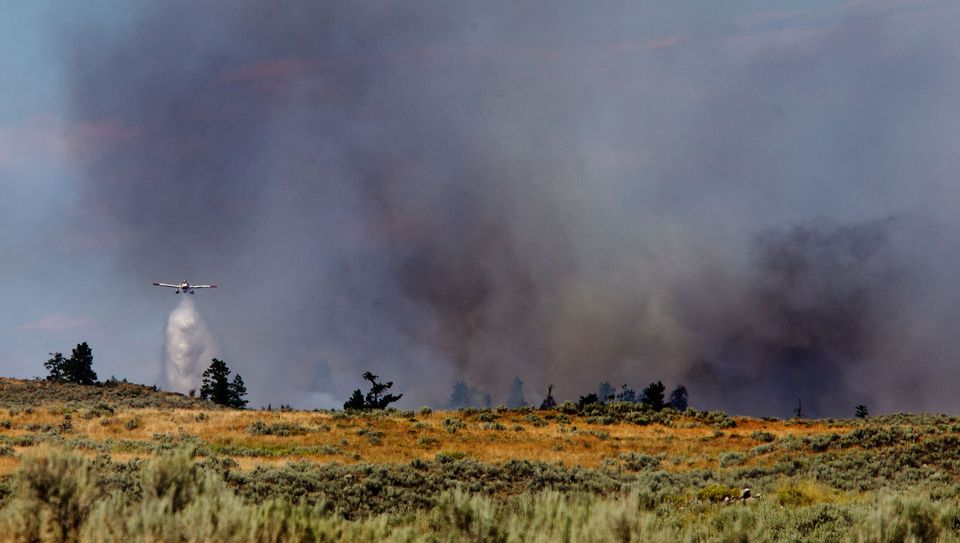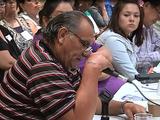By Sharon M. Day, ICTMN
My culture teaches that as an Ojibwe I have an inherent obligation to not only protect myself, my family, and my tribe but ultimately all humanity, including the environment that sustains us. We are spirit beings who came into this world to live the human experience. That spirit is love and it resides in our hearts.
My own struggle began early as I found a place of equality among my family, friends, and community because I was born lesbian and enjoy my life as a two spirit person. The Creator has smiled on me by giving me the opportunity to help others struggling with the still prevalent homophobic and sexist attitudes; not to mention that we also live as a conquered nation of people.
I have protested, walked picket lines, and was arrested for protecting Camp Coldwater back in 1999. These confrontation tactics seem no longer effective and may in fact, hinder progress for change. Earlier in my career I took a different approach by working within the political system. While there have been minor but important victories in a few social policy areas, I remain somewhat disappointed that more have not been moved to action.
In recent years, I have led two water walks to pray for the water and to raise the public awareness about the pollution affecting our waters. As I have crossed the United States twice from south to north and north to south, I have observed the individuals who have taken this journey with me. Carrying the water in a ceremonious way every day creates transformation. The water is a living entity and as such, it has a spirit. This spirit responds to the love shown to it. In this way, we have changed the way we think, feel and act toward our mother earth and the water.
At recent events, a white, female environmental scientist suggested that environmentalists were the new “abolitionists.” That one way to create change was to practice civil disobedience and populate the jails to save the environment. I wondered if she realized that 80% of the jails are already filled with people of color. Also many people of color do not have the luxury of taking 15 days off without pay to make a statement. I wondered what Black people might think of her analogy likening environmentalists to abolitionists. It took the abolitionists 100 years to end slavery. I’m not sure we have 100 years to save ourselves.
Meanwhile, Native peoples are taking a stand for clean water and land issues, by protesting against corporations and governments building the pipelines, blocking roads and railroad tracks, even confiscating a “thumper truck” to stop shale oil exploration in New Brunswick, Canada.
More direct actions are being planned all summer long. I respect the choices and the stands they are willing to take for sovereignty, for the land, for the water. However, some of what I hear is disturbing. For example the desire to renegotiate the terms of the agreements for mineral, oil and gas extraction so native people get a fair share of the profits. We could spend an entire article discussing the wrongs of capitalism that promotes hoarding and greed. Exactly opposite of what our ancestors valued. What does it matter who benefits or gets richer if we lose our precious water and continue to destroy the land?
An exception is a reserve in Canada where the people stand to earn over 59 million dollars selling solar energy. I wish more of our tribes would invest in renewable energy and create employment for their people.
Perhaps there will come a time again, where I am willing to engage in confrontation and I will be willing to put my life on the line, but for right now, I will choose ceremony allowing the asemaa to lead me.
I plan to continue walking the rivers that are endangered. I believe love is the healing grace. I choose to move forward in the spirit of love and bring people along with me in ceremony. The spirit lives in love, love is where the spirit lives.
Can an Indigenous world-view of respect, love, and kindness create a revolution founded in these values to create a shared world of love and respect for the Earth, our mama akii and the water, sacred water, m’de nibi?
Sharon Day, Ojibwe, is the executive director of the Indigenous Peoples Task Force.
Read more at https://indiancountrytodaymedianetwork.com/2013/08/08/choose-love-and-walk-rivers-save-them















